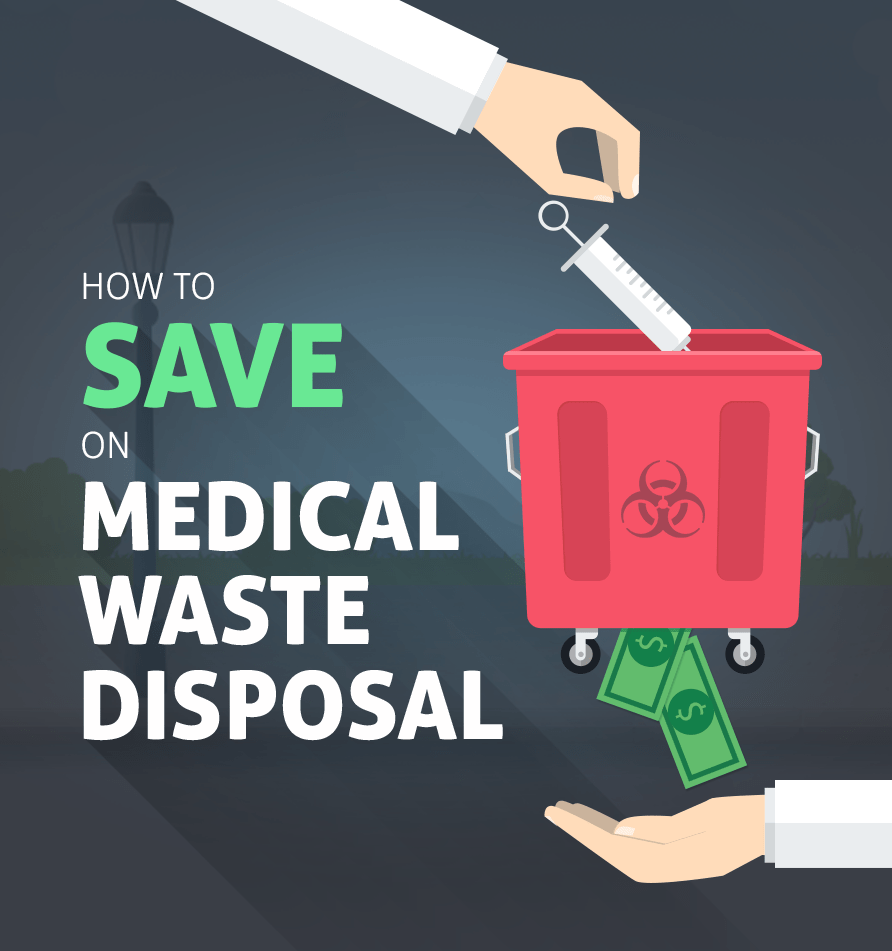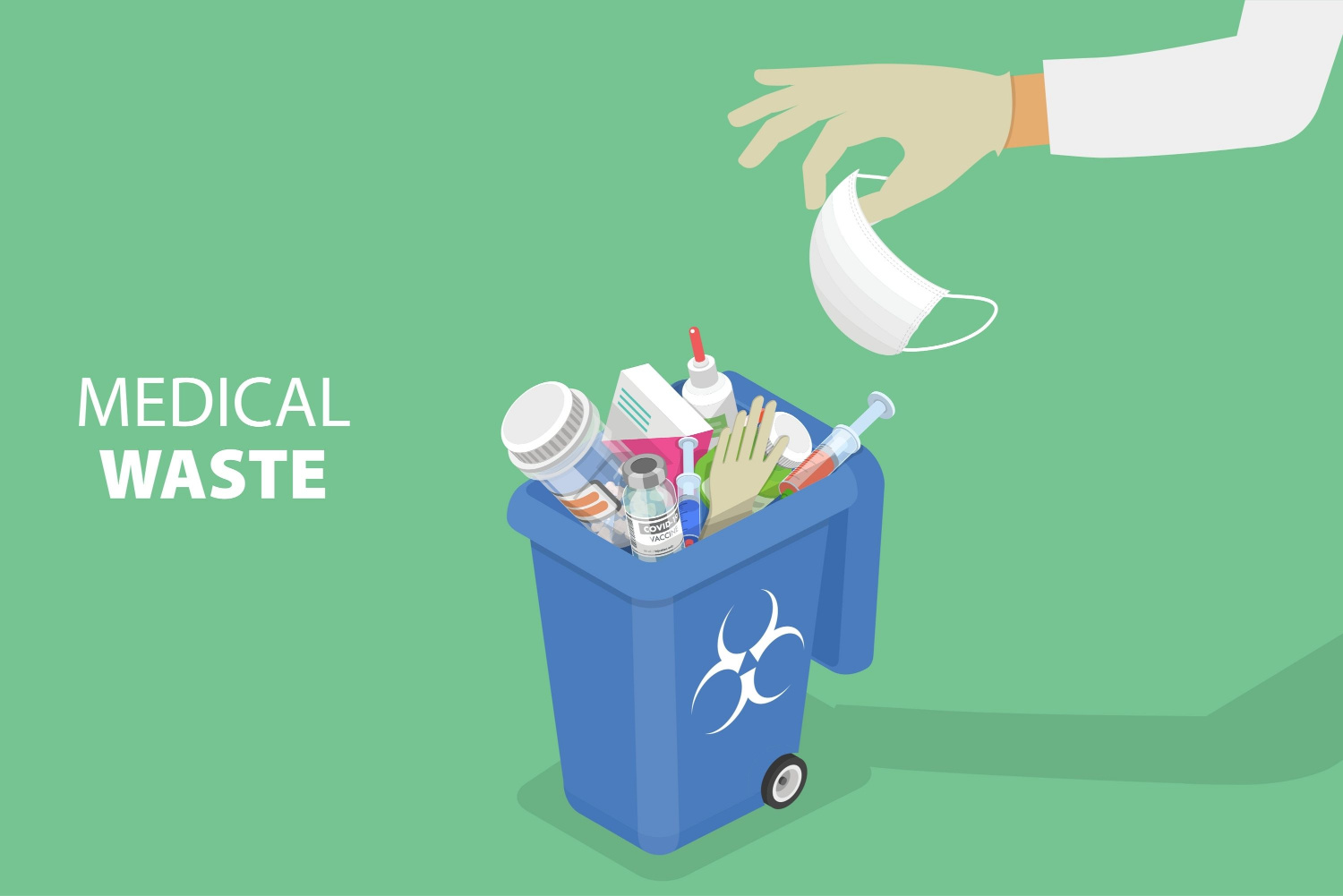Certified and Reliable Medical Waste Removal Service: Partnering for a Cleanser Future
Wiki Article
Finest Practices for Medical Waste Monitoring
Medical waste management is an essential aspect of healthcare facilities' operations to make sure the safety and security of patients, staff, and the atmosphere. Carrying out finest techniques in clinical waste monitoring is vital to minimize the dangers linked with unsafe waste. This consists of correct partition and classification of waste, guaranteeing its secure storage space and labeling, sticking to governing standards, and using efficient disposal techniques. By complying with these best practices, healthcare facilities can reduce the potential for infections, injuries, and air pollution triggered by inappropriate handling and disposal of clinical waste. This introduction aims to offer a summary of the relevance of finest methods for medical waste management and the succeeding areas will look into each technique carefully.Partition and Classification
In the field of clinical waste management, correct segregation and classification are necessary practices for ensuring the risk-free and efficient disposal of healthcare-related products. Medical waste is created from various resources, including hospitals, clinics, research laboratories, and other medical care facilities. It is composed of a wide variety of products, such as needles, syringes, plasters, gloves, and pharmaceutical waste.Segregation includes the organized splitting up of different types of medical waste based on their attributes and possible threats. Sharps waste, such as needles and blades, must be positioned in puncture-resistant containers to avoid injuries and the spread of contagious conditions.
Categorization is the process of classifying medical waste into different classifications based upon its possible hazards. WasteX Medical Waste Disposal. These groups might consist of contagious waste, harmful waste, pharmaceutical waste, and general waste. By categorizing waste, medical care centers can establish the proper disposal techniques and guarantee compliance with neighborhood guidelines and guidelines
Appropriate partition and classification of medical waste not just secure the health and safety and security of medical care workers and the general public yet likewise contribute to the general efficiency and performance of waste monitoring. It decreases the threat of mishaps, minimizes ecological impacts, and advertises responsible garbage disposal methods.
Correct Storage and Labeling
To make sure the safe and reliable disposal of medical waste, health care facilities need to adhere to appropriate storage and labeling methods. Proper storage and labeling play a critical function in keeping the integrity of clinical waste monitoring systems and safeguarding the health and wellness and safety and security of healthcare employees, patients, and the public.When it comes to storage, it is vital to have marked areas especially developed for various kinds of medical waste. These areas must be secure, well-ventilated, and geared up with ideal containers that meet regulatory requirements. Partition and categorization of waste ought to likewise be considered to avoid cross-contamination and prospective dangers.
Furthermore, proper labeling is important for efficient waste monitoring. Each container needs to be clearly labeled with the suitable signs, color-coding, and info regarding the waste it has. Tags need to include details such as the kind of waste, date of collection, and the name of the generator. This makes sure that all people taking care of the waste can conveniently recognize and manage it appropriately.
Regular tracking and evaluation of storage locations and containers are important to recognize any type of problems or violations. Staff needs to be trained on appropriate storage and labeling practices, stressing the relevance of compliance with policies and protocols.
Safe Transportation and Handling
Making sure the proper and secure transport and handling of medical waste is essential for keeping the stability of waste management systems and guarding the health and wellness and security of all involved. Clinical waste, that includes items polluted with infectious products, pharmaceuticals, and various other dangerous materials, need to be carried in a manner that stops leakages, spills, and possible contamination.It is important to utilize puncture-resistant and watertight containers that are specifically developed for clinical waste. Additionally, waste should be set apart based on its nature and type to avoid cross-contamination.
During transport, it is very important to make sure that waste containers are firmly attached and stored in a stable way. Cars made use of for transporting medical waste should be furnished with proper safety and security attributes, such as spill control systems, to decrease the threat of any kind of spills or leakages (medical waste removal service). Drivers ought to get training on appropriate handling and emergency reaction procedures to successfully attend to any type of unanticipated occurrences
Moreover, the transportation and handling of clinical waste should abide by all relevant regulations and standards established forth by regional, state, and federal authorities. Regular inspections and audits should be carried out to analyze conformity and recognize any type of areas for improvement.

Compliance With Regulatory Standards
Preserving compliance with governing standards is necessary for efficient medical waste monitoring. These standards are established to shield public health and wellness and the atmosphere by guaranteeing that medical waste is effectively managed, treated, and disposed of. medical waste removal. Conformity with regulative guidelines aids to avoid the spread of transmittable conditions, reduce potential dangers, and decrease the total effect of clinical waste on the atmosphereTo attain compliance, medical care facilities need to stay educated regarding the details policies controling medical waste monitoring in their jurisdiction. These laws may differ from nation to country, and also within different states or areas. It is important for medical care facilities to have a detailed understanding of these standards and to execute ideal techniques and methods to ensure compliance.
One trick aspect of conformity is the correct segregation and labeling of different kinds of clinical waste. This includes dividing sharps from various other waste, as well as categorizing waste based on its possible threats. Healthcare facilities have to additionally ensure that medical waste is kept in ideal containers and that these containers are correctly labeled and sealed.
Furthermore, conformity with governing standards calls for healthcare facilities to establish proper training and education programs for personnel participants entailed in clinical waste monitoring - WasteX Medical Waste Disposal. This includes offering training on waste segregation, dealing with, and disposal procedures, as well as the proper use personal safety tools
Normal tracking and audits are also vital to make certain ongoing conformity with governing standards. This includes conducting regular inspections of waste storage space locations, documenting waste management treatments, and preserving records of waste disposal.
Reliable Disposal Techniques
Health care facilities have to utilize effective disposal approaches for correct administration of medical waste - WasteX Medical Waste Disposal. Improper disposal of clinical waste can present serious wellness and environmental threats. There are a number of methods that can be utilized to effectively deal with clinical waste, guaranteeing the safety and security of health care employees, individuals, and the publicOne frequently used technique is incineration. Incinerators can safely melt medical waste at heats, decreasing the quantity and damaging any type of possibly hazardous virus. However, incineration can be expensive and might release dangerous pollutants into the air otherwise properly controlled.
One more approach is autoclaving, which involves subjecting the waste to high-pressure vapor. This process kills microorganisms, viruses, and various other microorganisms, making the waste secure for disposal in regular waste streams. Autoclaving is a efficient and eco-friendly approach, but it needs customized devices and trained workers.
Chemical sanitation is also used in many cases, where fluid chemicals are applied to the waste to sanitize it. This approach is much less commonly utilized as a result of problems about the effectiveness of chemical disinfection and the capacity for chemical deposits to infect the setting.
In addition to these methods, health care centers need to additionally implement proper segregation, packaging, and labeling of medical waste to guarantee its safe handling and disposal. Regular training and education of personnel on appropriate waste administration techniques are critical to maintaining effective disposal methods.
Conclusion

Medical waste management is a critical facet of health care centers' operations to make sure the security of patients, personnel, and the environment. Carrying out finest methods in clinical waste administration is essential to decrease the threats connected with hazardous waste. These groups might include contagious waste, unsafe waste, pharmaceutical waste, and general waste.In verdict, carrying out best methods for clinical waste management is crucial for guaranteeing the safety and security of health care employees, clients, and the setting. By properly setting apart and categorizing waste, keeping and classifying it correctly, making sure secure transportation and handling, conforming with governing guidelines, and utilizing reliable disposal methods, healthcare centers can properly manage and lessen the threats associated with medical waste.
Report this wiki page